WEATHER IN THE DOMINICAN REPUBLIC:
The Dominican Republic is known for its beautiful beaches, warm weather, and sunshine all year long. But to plan the perfect trip, it helps to understand the weather. In this guide, you'll learn the best time to visit, how the seasons change, what to expect in different regions, and simple tips to enjoy your vacation.
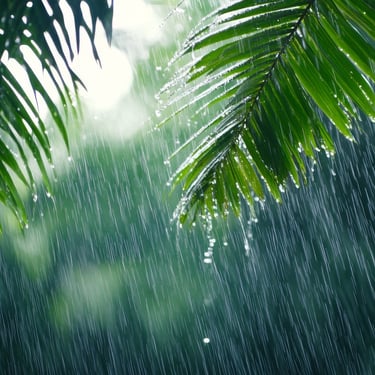
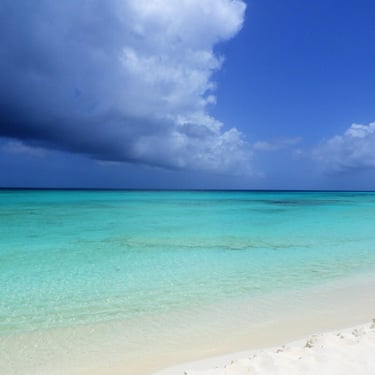
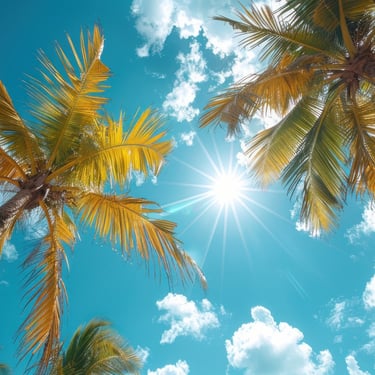

✅General Climate Overview: What to Expect Year-Round
The Dominican Republic has a tropical climate that stays warm throughout the year. The island experiences two main seasons: a dry season (high season) and a rainy season (low season). However, the weather in the Dominican Republic can vary depending on the region you’re visiting. Here’s what you need to know:
Average temperatures: On average, the daytime temperatures range from 27°C to 32°C (80°F - 90°F), with nighttime temperatures dropping to around 18°C to 23°C (64°F - 73°F). The coastal regions remain warmer, while the central mountains tend to be cooler.
Humidity: Due to the tropical environment, humidity can be high year-round, especially during the rainy season. Coastal areas tend to feel more humid compared to the mountainous regions.
Rain: Showers are typical but usually short-lived, and the rain doesn’t significantly impact your ability to explore or enjoy outdoor activities. Coastal regions might see brief, sudden rains, but the central mountains experience heavier rainfall, especially during the wet season.
✅The Seasons: When to Visit the Dominican Republic
1. Dry Season (December to April)
This is the most popular time for tourists, thanks to the pleasant weather. Here’s why:
Low humidity: The dry season offers cooler evenings and comfortable daytime temperatures, making it perfect for sightseeing, beach activities, and outdoor adventures.
Clear skies: Expect more sunny days than any other time of the year. It’s the ideal time to visit the beach and take in the natural beauty of the island.
Higher demand: Since this is peak tourist season, be prepared for larger crowds at popular attractions and higher prices for hotels and flights.
2. Rainy Season (May to November)
While the rainy season is characterized by more rain and higher humidity, it can also offer a more relaxed, budget-friendly vacation.
More rain: The island gets most of its rainfall during this period, especially in the afternoons and evenings. But these are often brief, localized showers that quickly pass.
Higher humidity: The air tends to be more humid during the rainy season, so expect warmer and stickier conditions.
Hurricane season (June to November): The official hurricane season in the Caribbean occurs from June to November. While hurricanes don’t strike every year, they can affect the weather during this period, especially in September and October. The risk of hurricanes is lowest in the early part of the season (June-July). Read more about the hurricane season
Fewer crowds: The rainy season sees fewer tourists, so prices for accommodations and flights are typically lower, and popular attractions are less crowded. If you don’t mind the occasional rain, this is an excellent time to visit for budget-conscious travelers.
✅Regional Climate Differences: What to Expect by Location
Different parts of the Dominican Republic have distinct climates, so understanding these variations will help you prepare for the local weather in your chosen destination.
Coastal Regions (Punta Cana, Puerto Plata, La Romana, Samana)
Hot and humid year-round: These areas maintain a warm, tropical climate throughout the year, with temperatures ranging from 28°C to 32°C (82°F to 90°F).
Cooling sea breeze: Coastal areas are usually breezier, which helps to offset the heat. The sea breeze offers refreshing relief in the evenings, making it pleasant for evening walks along the beach.
Beach lovers’ paradise: The coastal areas are perfect for beach activities, water sports, and sunbathing, especially during the dry season.
Central Mountains (Jarabacoa, Constanza, Santiago)
Cooler temperatures: The higher elevation of the central mountains brings cooler weather, with temperatures dropping to as low as 10°C (50°F) during the cooler months (November to February).
Best for hiking: The central mountains are ideal for outdoor enthusiasts, offering cool weather for hiking, exploring waterfalls, and nature tours. Popular spots include the Pico Duarte (the highest mountain peak in the Caribbean) and the Ebano Verde Forest.
Seasonal temperature shifts: Although the temperature is cooler than on the coast, it can still get warm during the daytime, especially during the summer months.
Southwest and Desert Regions (Bahoruco, Barahona)
Hotter and drier: These regions, especially the southern and southwestern parts of the island, are characterized by dry conditions and higher temperatures. This area receives less rain and is typically more arid.
Ideal for eco-tourism: The southwest is home to eco-tourism attractions like the Jaragua National Park and the Sierra de Bahoruco, where you can explore rare plant and animal species in desert-like conditions.
✅Packing Essentials for the Weather in the Dominican Republic
What you pack will depend on the season and the region you’re visiting. Here’s a quick checklist of essential items to pack:
✔️Light, breathable clothing: Cotton or linen clothes are perfect for staying cool in the hot and humid climate.
✔️Sun protection: High-SPF sunscreen, sunglasses, and a wide-brimmed hat are must-haves. The sun is intense, and you’ll need to protect your skin, especially in the midday sun.
✔️Rain gear: Pack a small umbrella or a light rain jacket if you’re traveling during the rainy season. Even in the dry season, afternoon showers are possible.
✔️Comfortable shoes: If you plan to hike or explore the countryside, bring sturdy, comfortable shoes suitable for walking on various terrains.
✔️Insect repellent: Mosquitoes are common, particularly during the rainy season, so it’s wise to pack insect repellent.
✔️Cool evening wear: If you’re heading to the mountains or visiting during cooler months, a light sweater or jacket will keep you comfortable in the evenings.
✅Travel Tips for Dealing with the Weather
Stay hydrated: The tropical heat can quickly dehydrate you, especially if you’re spending time outdoors. Drink plenty of bottled water, and avoid tap water or ice made from unfiltered water.
Time for your outdoor activities: The best time to go sightseeing or do outdoor activities is in the early morning before the sun is at its hottest. Afternoon showers are common in the rainy season, so plan your excursions accordingly.
Be flexible with your plans: If you’re traveling during the rainy season, be ready for sudden weather changes. While the rain usually doesn’t last long, it’s a good idea to have some indoor activities planned, like visiting a museum or enjoying a spa day.
Protect your skin: The strong Caribbean sun can cause sunburn quickly. Reapply sunscreen every two hours and after swimming.
For more tips on staying cool in hot climates, check out Beat the Heat in the Dominican Republic.
✅Useful Resources for Weather Information
When planning your trip to the Dominican Republic, staying updated on the weather is a must. Here are some reliable resources to keep you informed:
✔️AccuWeather: Get accurate and up-to-date weather forecasts for cities all over the Dominican Republic.
✔️Weather Underground: Find detailed weather forecasts and historical data for different areas across the country.
✔️Windy: Explore interactive weather maps with real-time wind, rain, and temperature updates for the entire Dominican Republic.
✔️National Hurricane Center (NHC): Stay aware of tropical cyclones and hurricanes affecting the Caribbean with real-time updates.
✅Hurricane Season in the Dominican Republic
The Dominican Republic, located in the Caribbean, is no stranger to hurricanes. However, understanding the hurricane season and knowing how to prepare can help ensure your trip remains safe and enjoyable, even if a storm happens to pop up.
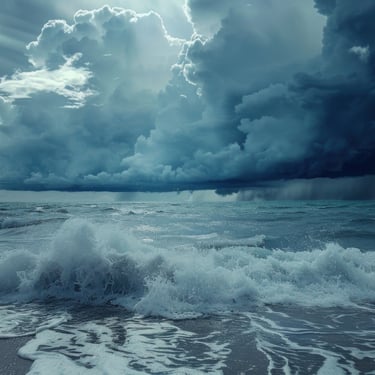

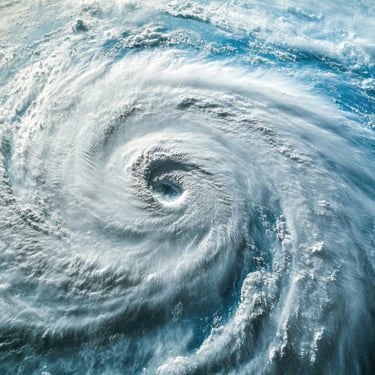
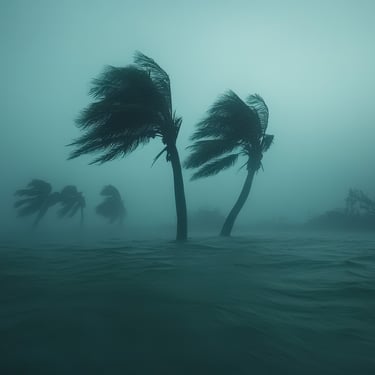
✅When is Hurricane Season?
Hurricane season officially runs from June 1 to November 30.
The highest risk of hurricanes typically occurs between August and October.
However, it's important to note that hurricanes don't always strike every year, and storms can sometimes be mild or miss the island entirely.
✅How Hurricanes Affect the Dominican Republic
Storms in the Caribbean: The Dominican Republic is located in the Caribbean Sea, where hurricanes are most common. While some storms hit the island directly, many pass by or weaken before reaching land.
Impact of a hurricane: When hurricanes do make landfall, they can cause heavy rain, strong winds, and flooding. This can lead to flight cancellations, road closures, and temporary closures of businesses, beaches, and tourist attractions.
✅What to Expect During Hurricane Season
Weather patterns: During the hurricane season, the island typically experiences more rain, especially in the afternoons. You may encounter short but heavy downpours that usually last an hour or less.
Humidity: It is also more humid, which can make it feel hotter than usual.
✅How to Prepare for Hurricane Season
Stay Informed
Before and during your trip, keep an eye on weather forecasts and any warnings or alerts related to hurricanes. The Dominican Republic’s government and weather agencies issue updates during storms.
You can monitor weather websites, use weather apps, or check local news stations for updates.
Travel Insurance
Consider purchasing travel insurance that covers unexpected cancellations or delays due to weather. This will give you peace of mind in case your trip needs to be altered or your flights are delayed.
Flexible Plans
Be prepared to adjust your plans. Some tours, excursions, or beach activities may be canceled or rescheduled due to rain or a storm. It’s a good idea to have indoor activities on hand, like visiting museums or enjoying local restaurants.
Hotel and Resort Precautions
Hotels and resorts in the Dominican Republic are well-equipped for storms, with safety procedures in place. Many will provide information on how to stay safe in case of bad weather.
✅What to Do If a Hurricane is Coming
Stay inside: If a hurricane warning is issued, it’s safest to stay inside and avoid the beach and water activities. The heavy winds and rain can be dangerous, and it’s best to follow local authorities' advice.
Follow emergency instructions: Your hotel or resort will have emergency procedures, and local authorities will issue instructions if the situation requires evacuation or sheltering.
✅Traveling During Hurricane Season: Pros and Cons
Pros:
Lower prices: Since hurricane season is considered off-peak, you may find cheaper flights and accommodations.
Fewer crowds: The beaches and popular tourist spots are less crowded, giving you a more peaceful experience.
Cons:
Risk of bad weather: While not all hurricanes directly affect the Dominican Republic, the possibility of storms means you might face rainy days and possible disruptions.
Limited activities: Outdoor activities and excursions may be canceled or limited during a storm, so some of the best parts of your trip could be affected.
✅Tips for Enjoying Your Trip During Hurricane Season
Pack appropriately: Bring a rain jacket or umbrella, and consider packing extra sunscreen since the rain can clear up quickly, leaving the sun shining again.
Stay flexible: Be open to adjusting your schedule. If you’re stuck inside due to weather, check out the local indoor attractions or use the time to relax at your resort.
Be prepared to cancel or delay plans: If your flight or tour gets delayed due to bad weather, it’s helpful to remain patient and have backup plans.
✅In Conclusion
While hurricane season in the Dominican Republic may sound intimidating, it doesn't mean you should avoid visiting. By staying informed, being flexible, and preparing for the possibility of rain or storms, you can still enjoy a safe and wonderful trip. Many travelers find that the quieter atmosphere and lower prices during hurricane season make it a worthwhile time to visit — just be sure to stay prepared and keep an eye on the forecast!
Terms and Conditions © All rights reserved 2025
Affiliate Disclaimer
Some links on DR Simplified are affiliate links. If you make a purchase or booking, we may earn a commission at no extra cost to you. Thanks for your support!
